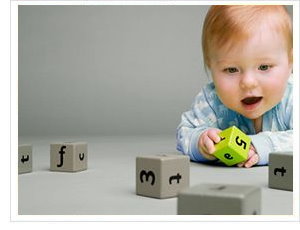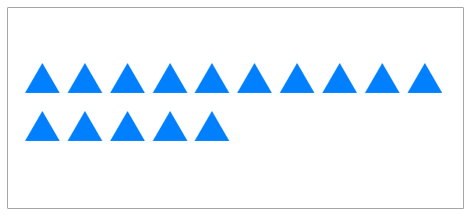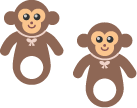Babies can do math (far better than adults can!)

If you give [tiny kids] the facts they'll deduce the laws that govern them. That is exactly the same method that scientists use to discover laws.
- Glenn Doman
While the gift of early literacy is one of the greatest gifts you can ever give a child, it could perhaps be even more important to teach mathematics early. While a child may end up being a good reader even if taught from the age of five or six, there is a certain type of math teaching that - for it to be guaranteed to be successful - must be started before the age of two and a half.
In children under the age of two and a half (and some slightly older children), right-brain dominancy gives the ability to "subitize" large quantities - that is, to instantly perceive how many items are in a relatively large set, without counting or guessing. For more on this, go to Perceiving Quantity (Subitizing).
As a parent, you can make use of this natural ability in your very young child to teach him about the true nature of quantity. The Doman and Shichida math programs begin by teaching numbers as quantities, rather than the symbols (1, 2, etc) used to represent them. Understanding numbers in this way enables children to instantly "see" the solutions to equations involving addition, subtraction, multiplication and division. And while the ability to subitize large quantities fades as children grow older, the ability to do instant math need not.
Even when children are over the age of two and a half, and can no longer subitize large quantities, there is still a great deal to be said for beginning mathematics at an early age. Quantity recognition can still be taught - but with quantities presented on a grid rather than in a random formation. For example, presenting the number 15 like this…

... makes it easy to tell that there are 15 items, almost as quickly as if there were only 5 items.
The child who understands quantity before she begins learning equations begins her mathematical education on a much more solid footing than the child who does so being familiar only with the symbols used to represent numbers.
